As guests arrived for Brandon Middle School’s parent night event April 21, they received a turquoise brochure with the title “Water is Life.”
“Would you like to carry a bucket?,” asked seventh-grader Michaela Offer, holding a decorated black bucket filled with eight bottles of water.
Noticing the individual’s perplexed look, Offer clarified.
“You put it on your head and walk,” she said. “It only takes a few minutes for us to walk down the hall with this amount of water, but people in Sudan walk at least eight hours a day to get water that’s not even fresh and it’s heavy. So this water doesn’t even really compare to what they are carrying.”
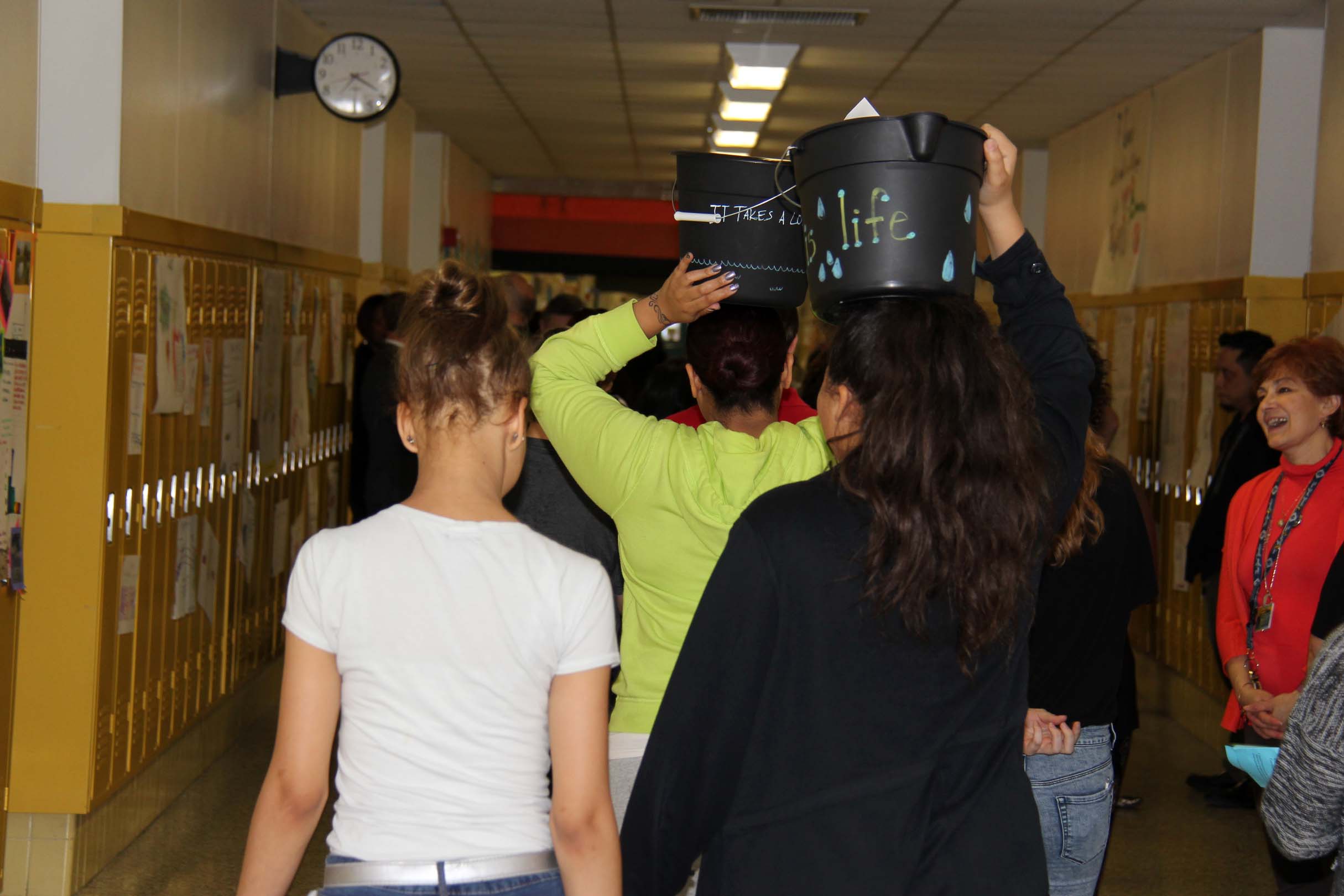 Offer and her seventh-grade peers lined the hallway to showcase their English, math, science and social studies work related to topics and themes from A Long Walk to Water by Linda Sue Park.
Offer and her seventh-grade peers lined the hallway to showcase their English, math, science and social studies work related to topics and themes from A Long Walk to Water by Linda Sue Park.
The books tells the true story of Salva Dut, one of the Lost Boys of Sudan, and also gives a fictional view into the life of a village girl named Nya.
Brandon English teacher Charlotte Baedke and her colleagues purchased enough copies of Park’s book for all seventh-graders after Baedke was awarded a Virginia Beach Education Foundation (VBEF) grant funded by The Tom Wilson Memorial Fund and Dixon Hughes Goodman. Now, with a permanent set of books in the school’s inventory, Brandon’s seventh-grade teams will be able to continue the integrated studies they call “A Shorter Walk to Water” for years to come.
“We were really touched by the book when we read it, and we thought the students would really like it and the two different story lines,” said Baedke.
Studying the novel in English class was only one component of the cross-curricular connections Baedke and her grade-level colleagues planned when they applied for the VBEF grant.
“We talked to our seventh grade colleagues about the book, and they were very cooperative and willing to add elements to their existing lessons,” she said. “In Math, they connected surface area and volume to the rain barrel we created, talking about the book and how conserving water helps. In science, they connected the book to their lessons on water footprints and the Chesapeake Bay and how conserving water locally will help. In social studies they discuss conflict, and students learned how the scarcity of water and other precious resources often lead to conflicts.”
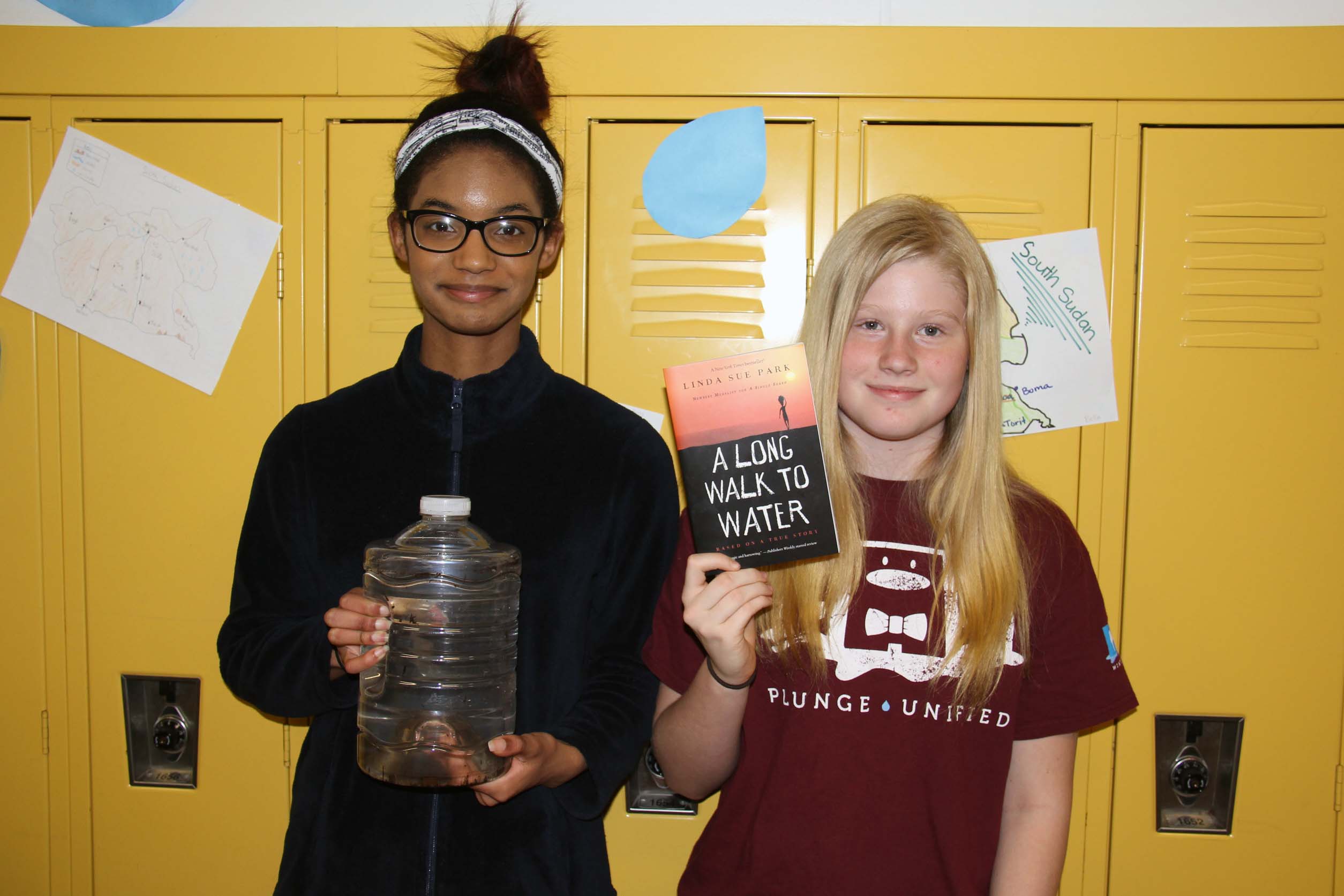 The goal of this interdisciplinary work, however, extends beyond the primary purpose of helping students achieve academic proficiency. “We do have specific curricular objectives,” said Baedke, “but our secondary goal this year has been to foster kindness and empathy through literature.”
The goal of this interdisciplinary work, however, extends beyond the primary purpose of helping students achieve academic proficiency. “We do have specific curricular objectives,” said Baedke, “but our secondary goal this year has been to foster kindness and empathy through literature.”
Also awarded a VBEF grant with this goal in mind is Debbie Hubbard-Jones, one of Baedke’s seventh-grade English colleagues. Her grant project supports another novel study to “balance literacy goals with character development strategies in order to reduce incidences of bullying,” wrote Hubbard-Jones. With VBEF grant funding from GEICO, Hubbard-Jones purchased copies of Wonder by J. R. Palacio, which features a main character born with a facial deformity who tries to fit in at school.
“[It] is an ideal novel for teaching kindness, compassion and empathy. There are many examples of bullying behaviors in Wonder countered by heartfelt acts of kindness,” explained Hubbard-Jones. She also purchased of a limited amount of extra copies of Wonder to permit parents to check out the novel to read along and discuss with their children.
This night, however, was focused on A Long Walk to Water and students having the opportunity to share with parents and other guests lessons learned as well as to discuss their fundraising efforts for a charity that digs wells in South Sudan.
“Helping our students become globally-aware, responsible citizens” is another goal of the novel study according to Baedke, adding that “they learn what life is like for a student their age in another country who is dealing with real-world conditions.”
One need only ask seventh-graders about A Long Walk to Water for confirmation that Brandon’s seventh-grade teachers have achieved their goals of fostering empathy, kindness and global awareness.
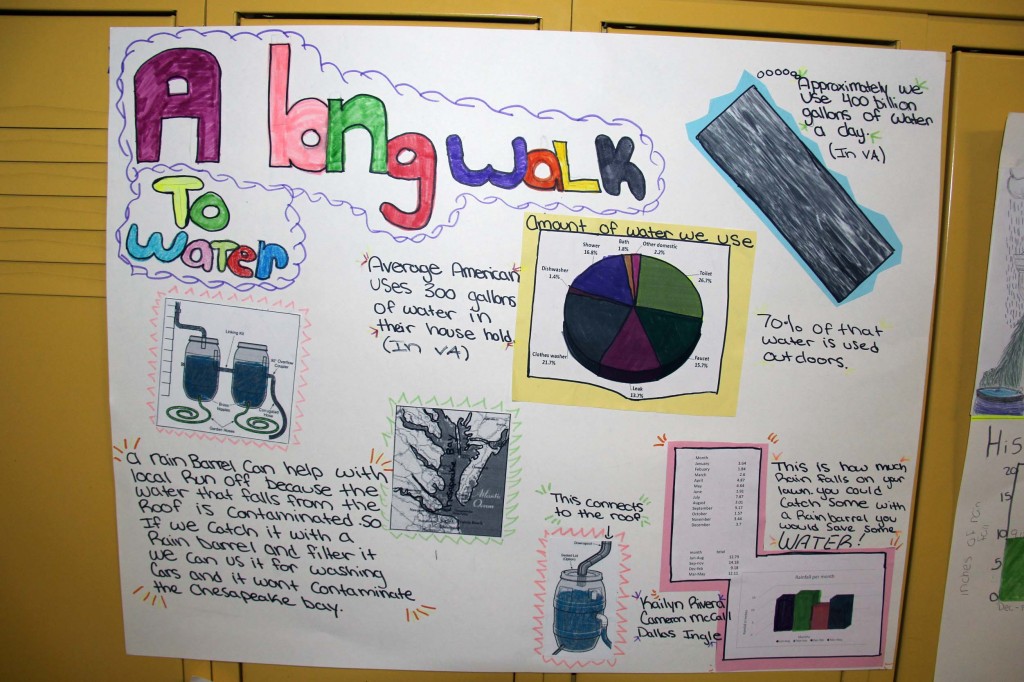 “I learned that not everybody has the same things as we do,” said Ajani Jones. “Not everyone is as fortunate as we are, so don’t be selfish with what you have.”
“I learned that not everybody has the same things as we do,” said Ajani Jones. “Not everyone is as fortunate as we are, so don’t be selfish with what you have.”
“I learned what a refugee is and how hard it is for them to survive. I can’t imagine,” said Jayla Nicholson.
“You should help each other,” said Julissa Bishop about what she learned.
“We learned we have to be more thoughtful of how others live and who they are,” said Sarah Hafley, “and we have to conserve more water.”
“Since they don’t have it as easy as us and we know that now, we shouldn’t take water for granted as we do,” said Michaela Offer, “and if we have a chance to help, then we should because it would nice to have clean water.”
“I didn’t know how far they had to walk for water, and it’s made me realize how we take advantage of water,” said Amber Cowherd. “We just go downstairs and get water. It’s so easy for us.”
Student research on water and its measurement, usage and conservation is featured in the math and science projects taped to Brandon’s yellow lockers for visitors to view. Frequency tables tally rainfall amounts in inches. Volume equations calculate rain barrel capacity. “Interesting facts” detail water usage in the United States and Virginia.
Cowherd and Hafley were stationed at a table to discuss their science class work with water footprints.
“We used a computer program to analyze how much water we use in our homes,” said Hafley. Pointing to one analysis on the table she said, “For example, in this house, the toilet was 40.3 percent, the faucet was 35 percent and the shower was 41.5 percent. We reviewed our percentages and wrote about how we can conserve water in our homes.”
As for Hafley’s house? “My house was a little under average, so it was better,” she said. “My parents used to live in California, and California has some water problems there, so my parents are really good at conserving water.” Hafley shared that she is trying to emulate her parents and take quicker showers at her house.
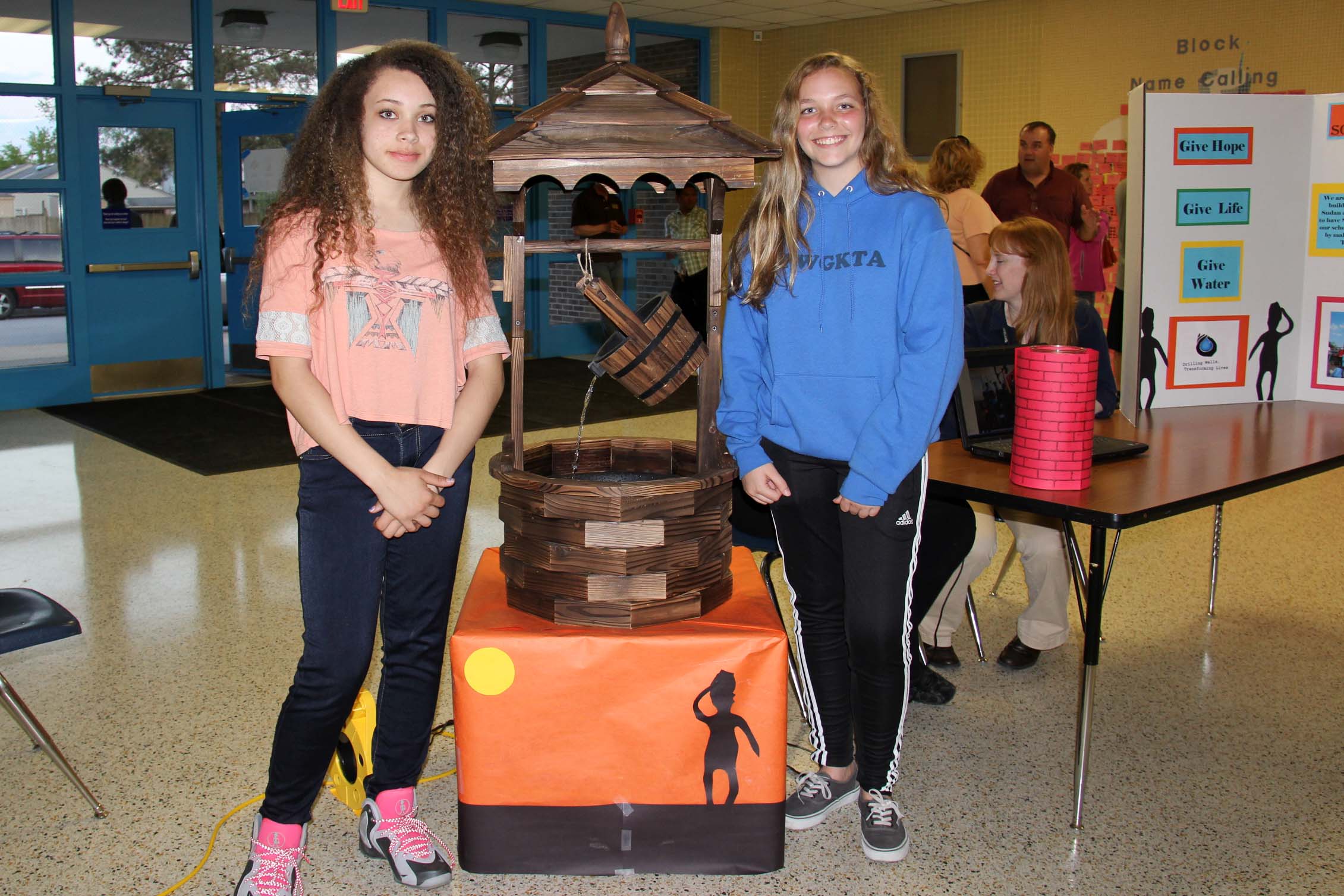
Cowherd also is mindful of her shower usage. “I take very long showers, so I cut those down. Also, I have a bad habit of letting the water run when I brush my teeth, so now I turn the faucet off. I realize that every drop of water has a big impact on communities and the world,” she said. “[The book] makes me realize that even technology is something we take for granted…They don’t have technology or proper clothing – they don’t have anything. I think it made a big impact on me to donate more of my clothes. I have clothes that I know I’m not going to wear in this lifetime but I’ve still kept. Now I donate those.”
Taking her book reflections one step further, Cowherd commented on student relations in her middle school, demonstrating what Baedke and her colleagues hoped would be an outcome of the studies – empathy and kindness.
“It’s made me realize that there are people in our school that don’t have as much as we might have, and we don’t need to be mean about it or say anything about it because that may be all they can do for themselves. They can’t do anything more,” said Cowherd. “I feel bad about things that I have said and that others have said in the past. The book has had an impact on me.”
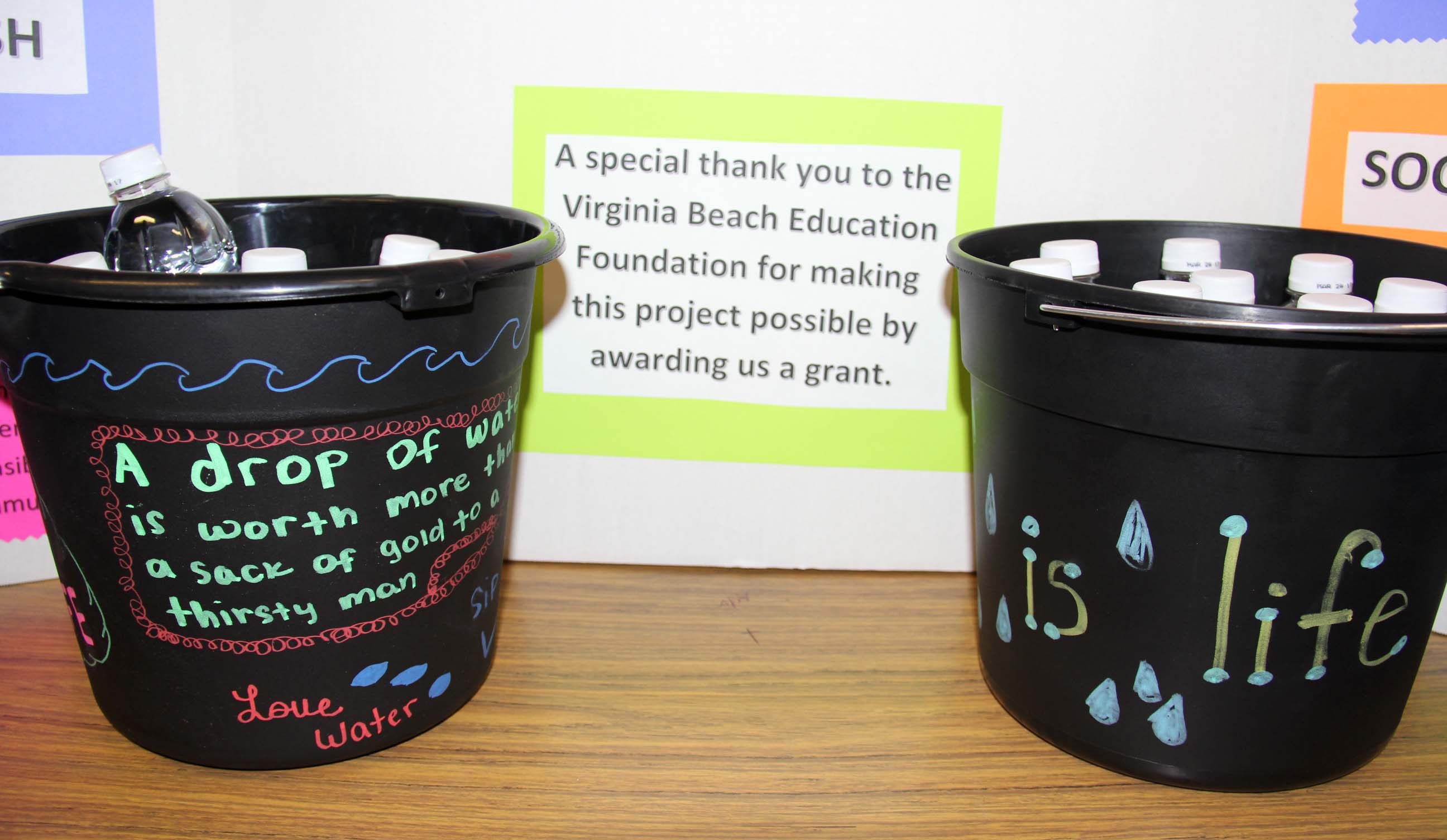 For more information about the Virginia Beach Education Foundation, including how you or your organization can support future grant projects to benefit students, visit vbef.org or contact VBEF coordinator Debbie Griffey at (757) 263-1337 or debbie.griffey@vbschools.com.
For more information about the Virginia Beach Education Foundation, including how you or your organization can support future grant projects to benefit students, visit vbef.org or contact VBEF coordinator Debbie Griffey at (757) 263-1337 or debbie.griffey@vbschools.com.

What excellent projects! I’m proud to say that my child attended Brandon and absolutely thrived there, moving on to the GSWLA at Tallwood. If not for the engaging, challenging and caring faculty (and other staff too) at Brandon, she might not have been so inquisitive and willing to take on difficult projects and meet high expectations.
Thanks for everything you do with your/our kids!
good for you… -_-
o.o i wasn’t in here -_-
Whhy doe…